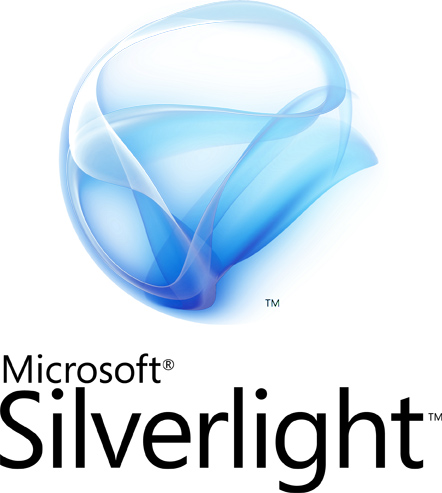The shift to Rich Internet Applications is revolutionary… But it can be bad for deadlines.
 The last 60 days have been eventful at Black Mesa Ventures and for our new GEOINTELIS online service. I haven’t had much time to blog.
The last 60 days have been eventful at Black Mesa Ventures and for our new GEOINTELIS online service. I haven’t had much time to blog.
We are in the middle of an industry-wide revolution in the delivery of software, moving from desktop and client/server delivery to web-based Rich Internet Applications (RIA) delivered from the cloud. And our decisions in the last 60 days put us firmly in the middle of the latest wave of that revolution.
In November, we made the difficult decision to switch platforms for GEOINTELIS from ASP.NET AJAX (JavaScript) to Silverlight. This little episode might be informative for other Web 2.0 startups, and software developers generally.
(We haven’t written much about GEOINTELIS because it is in stealth mode. Yes, I know I just posted about how “Stealth mode doesn’t work.” I’ll post another one on “When does stealth mode work?”… Bear with me!)
This decision wasn’t easy, but it was necessary. Microsoft has announced that they’re ending development and new releases for the Bing Maps ASP.NET AJAX control in favor of the new Silverlight control. In fact, they’ve announced a whirlwind of changes in both their Bing Maps offering and their Silverlight controls over the last year.
The discontinuation of the old control won’t happen immediately, but it does mean that our current development path is ultimately a dead end.
Obviously, this happens periodically to anyone involved in software: Technology moves forward and platforms change.
We’d developed our previous product, ParcelExplorer, on the old control and were in the middle of developing our new product, GEOINTELIS, on the old control.
We could have continued using the old control. We considered launching with the old control because switching paths was going to throw our release deadlines into disarray. But we decided to switch.
We decided that it was worth the cost of switching not only because it ensures that we won’t have to re-develop in the future for the new platform, but also because our product gets a lot of advantages from using Silverlight.

What do we get from Silverlight 3? This is geeky, technical stuff, but worth a bit of explanation to explain the coming revolution in Rich Internet Applications and SaaS.
With Silverlight, there are two major advantages: 1) We get a lot more control over the user experience and presentation of the application; and 2) We reduce the number of potential points of failure and incompatibility between browsers in our application.
First, the User Experience (UX): Unlike AJAX, which is really just an adaptation of a wide range of existing browser-based functions (mostly dependent on whatever JavaScript parser your browser implements…), Silverlight is a whole mini-operating system that runs inside the browser, controlling server communication, most aspects of user interface design and layout, and all user input – like mouse button clicks and scroll-wheels.
This is a big deal. It allows us to deliver a more “desktop-like experience” for users. Hence the appellation “Rich Internet Application” for these kinds of applications.
We can deliver an experience similar to what users are familiar with in their installed desktop software. We achieve much greater control over the map interactions, location marking, pop-up dialogue boxes, right-click context menus, report and document generation, and a whole range of other things you just can’t control very easily from JavaScript.
Second, using Silverlight reduces the overall amount of JavaScript we’re required to manage, improving reliability and reducing the number of points of potential failure. Whenever you can reduce the amount of code you are managing, you reduce the chances for failure.
And by using Silverlight inside the browser, we eliminate the question of differences in JavaScript implementation almost entirely. We don’t have to develop different versions for different browsers. We can rely upon a single application to delivery a single, consistent experience for our users.
As an entrepreneur and technology executive, responsible for the whole enchilada, from product design and usability to ongoing support, maintenance and development costs, all of these capabilities make me smile.
And all of this discussion about Silverlight leads me to my point about the revolution: The emergence of web application frameworks like Silverlight and its competitors (Adobe’s Flash, Flex and AIR, Sun’s JavaFX, and Google’s Gears) makes it completely realistic to replace visually complex, interaction-intensive enterprise client/server and desktop applications with web-based on-demand services.
Adoption of these rich internet application frameworks is accelerating quickly. And Silverlight adoption has grown very fast.
(If you want to know more the future of RIAs, O’Reilly has a whole publication dedicated to tracking this emergence: InsideRIA)
And these desktop software replacements, being delivered to a web browser from the cloud, are inherently easier to manage, faster to deploy, less expensive for the middle market and much more efficiently delivered.
The revolutionary potential of software on-demand has been promised since the dawn of the Internet Age, but we’re finally starting to see some delivery on that promise.
As these RIA platforms become the norm and the development skills and tools proliferate, expect to see a lot more easy-to-use, technically powerful and visually compelling enterprise SaaS offerings in the near future.
From TechVentureGeek, post The shift to Rich Internet Applications is revolutionary… But it can be bad for deadlines.
Need help with your business? Contact JumpPhase.com
Kraettli Lawrence Epperson
Latest posts by Kraettli Lawrence Epperson (see all)
- The Entrepreneurial Journey: Interview with Our Founder Kraettli L. Epperson - October 12, 2024
- Do entrepreneurs do their own taxes? - August 31, 2019
- A venture capital firm asks to interview you; What do you do? - August 31, 2019